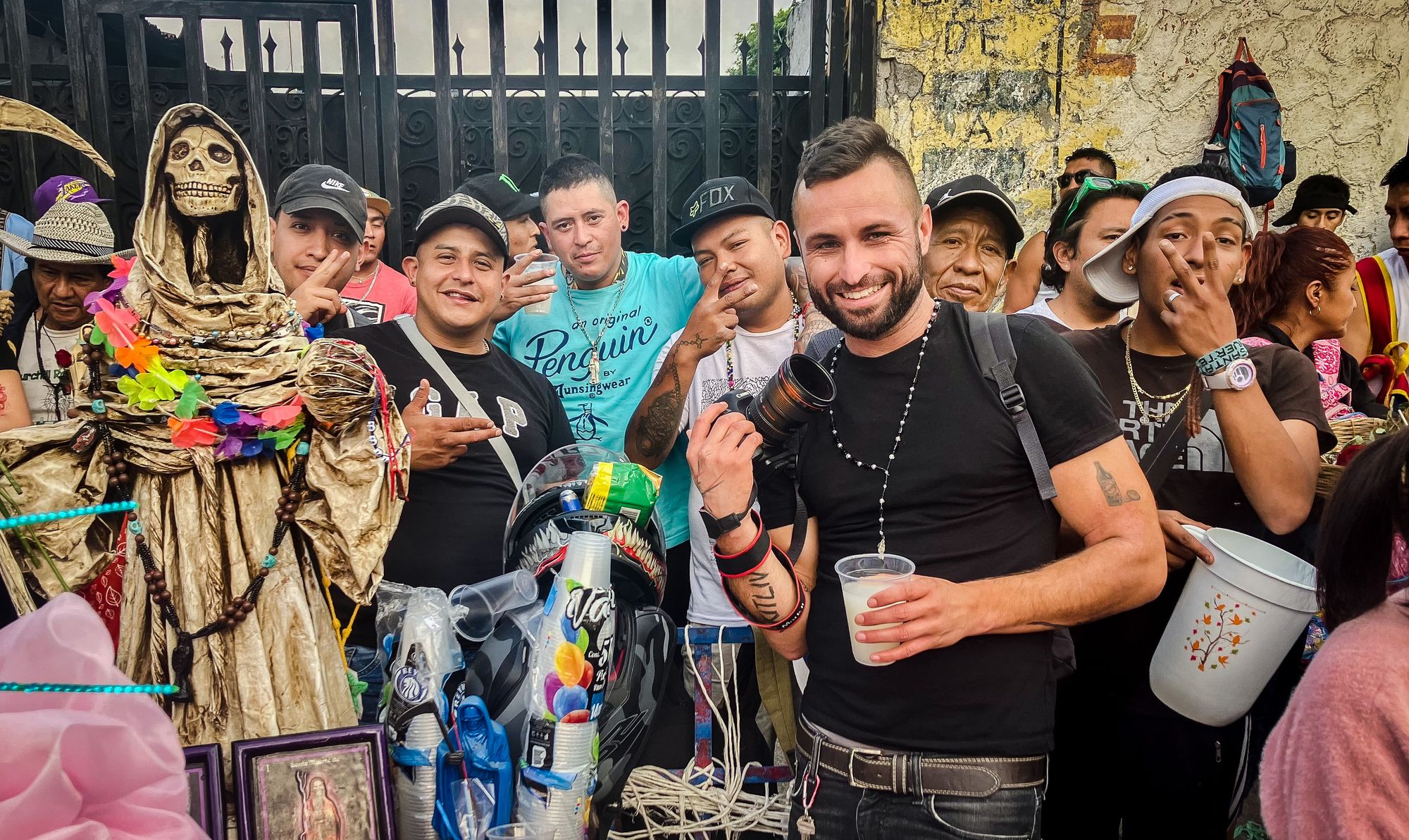Beer and jo*nts and warm people: Santa Muerte's mass in the gangsta neighborhood

The first of November is the day of Santa Muerte, the patron saint of outcasts of all kinds. I couldn't miss the mass of her followers at the altar of Saint Death in the dreaded Tepito district of Ciudad de México.
The Tepito district, near the historic center of Mexico City, has earned a reputation as a gangster neighborhood, a dreaded corner of the city where decent people don't go and where even the less decent are wary. But on the day of the celebrations, the atmosphere couldn't have been friendlier. After all, this stigmatized place has gradually opened up to the outside world in recent years. Yet it retains the appearance of something that has little in common with the rest of the metropolis. It's more like a community, a community of people raised by the rough streets.

Santa Muerte has a home in Tepito
And then there are other animosities. On the first of every month, for example, the devotees of Santa Muerte gather at her altar, which was placed there more than twenty years ago by Doña Queta, a local icon who still guards the shrine and can be encountered in the neighborhood.
The main feast of this unconventional saint in the form of a reaper takes place on the first of November.
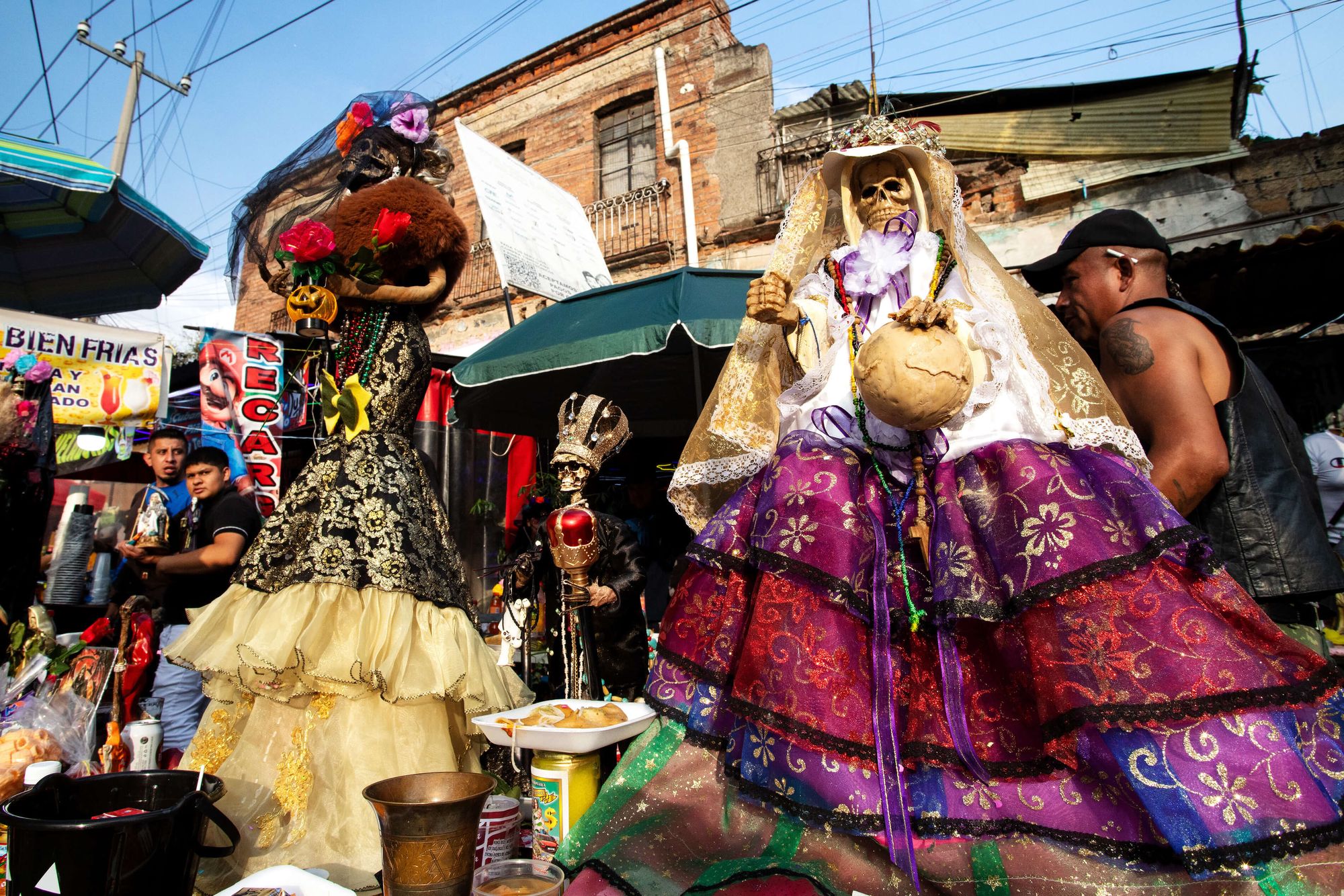
As this is exclusive material, the rest of the report is for subscribers only. You can unlock it for $6 a month and have access to all the exclusive content. Or continue to the unlocked posts.
You will find a lot of believers in the subway station carrying half-metre-high statues of Saint Death, decorated with all kinds of trinkets, cigarettes, or banknotes. As you enter the district, there are more and more places where you can buy similar statues and other props. So, for example, are plastic bottles of the cheapest mezcal, which are then poured over the statues, as it is necessary to present Mother Death with something a bit stronger. In Alfarería Street, where her most famous altar is placed, thousands of people then stand in line waiting their turn to pay their respects to the saint and ask for favors.
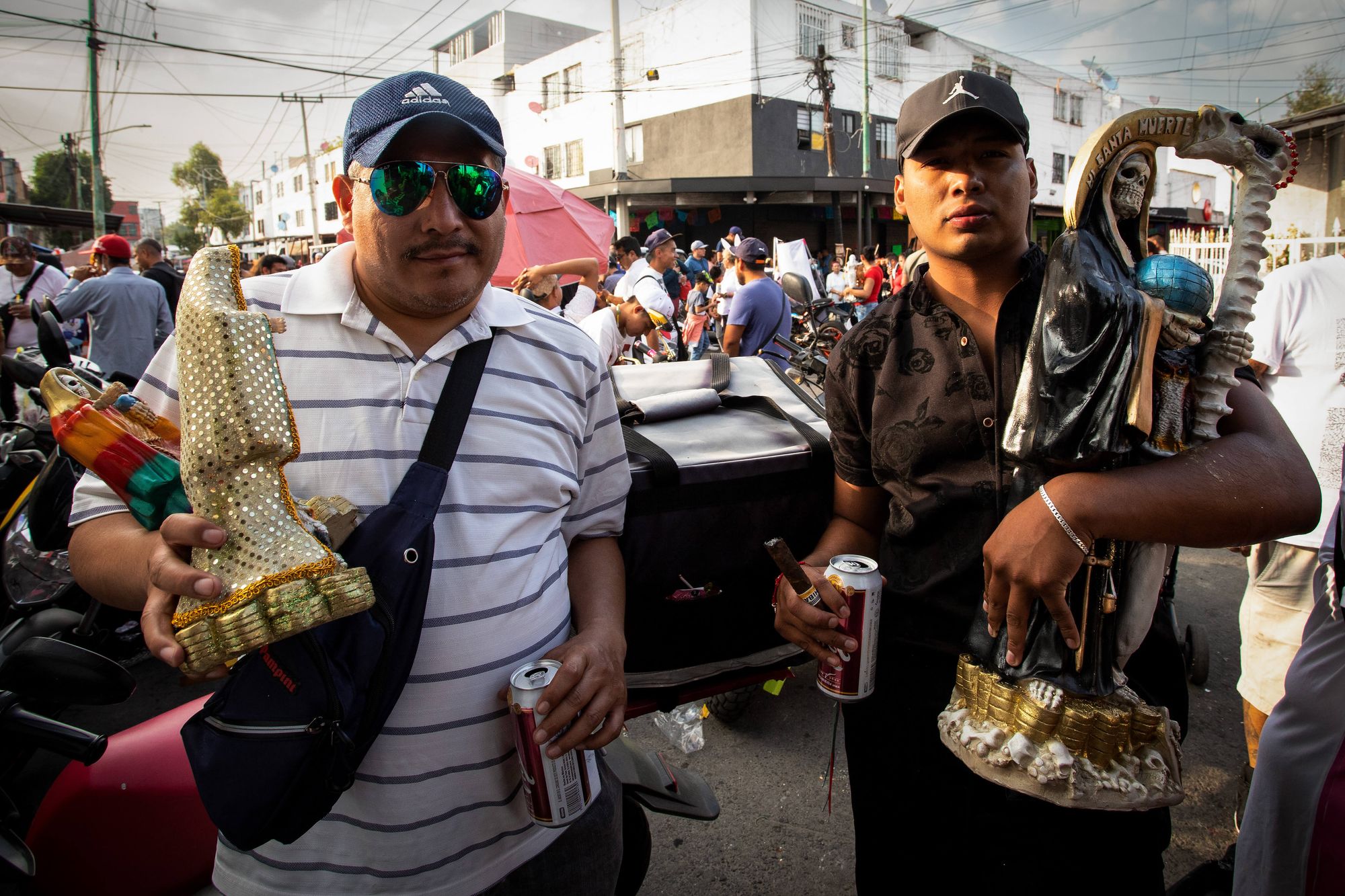
The legend says that Santa Muerte is the patron saint of criminals, in Mexico's case, especially narcotraffickers. Not that she isn't, but she isn't exclusively. Rather, some narcos might be said to plead with her for protection, but it's not as if she's there exclusively for them. Any believer will tell you that Santa Muerte is there for everyone. Just like death itself comes for everyone. A large number of the faithful are even Catholic. It's just that there is no room in rigid Christianity for many people - for example, homosexuals, prostitutes, or those who make a living from crime. And so they seek guidance from a skeleton scythe-wielding woman who, according to legend, judges no one for their life on the edge.

"80 percent of the people who came today are not from Tepito," says Gabi, a local patriot, a fourth-generation resident of the neighborhood.
The incoming crowd represents all age groups, from babies to teenagers and adults to old men and women. What unites them is that they hold relics dedicated to their saint - most often the aforementioned statues of all sizes, but also necklaces with her figurine or paintings of her. The street leading to the altar is lined with stands with larger-than-life representations of Santa Muerte. In the middle of this spire, people march and some give each other small gifts - perhaps sweets, or even smaller artifacts for the faithful. I, too, received a trio of necklaces with the image of Santa Muerte, also known as Niña Blanca, the white girl.

In the middle of the corridor stood an elderly man with a stern look, a pentagram on his shirt, and a smoked cigar between his fingers. He blew smoke into the faces of the wandering statues at close range because Santa Muerte likes to indulge in some of the earthly pleasures. That's also why the faithful present her with bottles of alcohol, joints of marijuana, or even banknotes on arrival.
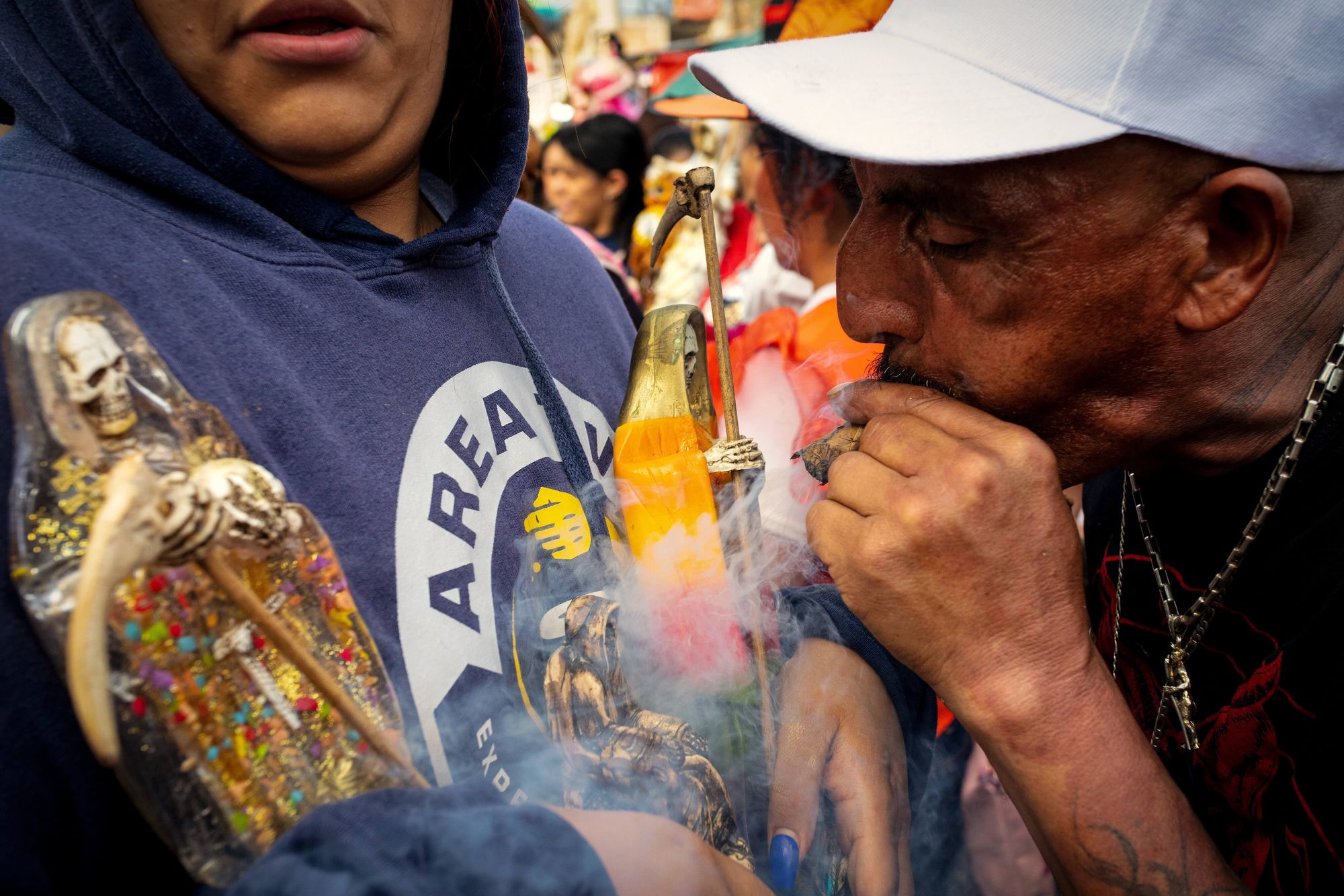
Everyone comes here to ask for something different. Some wish for healing, others for money, and others for protection in their criminal activities.
Either way, the first of November is a day of great celebration. People spend all day and night around the altar. Pot is smoked, other drugs are taken, and beer or michelada is drunk. There's even a band playing traditional songs. Whole families come and everyone has a good time.

A group of guys invited me to drink pulque, a traditional drink of the pre-Hispanic civilization, made by fermenting agave. They smile and have their pictures taken, and then we take pictures together. Elsewhere, another group invites me for free tacos, and when I stop at a beer stall, I'm taken in by Marco, who immediately makes sure a liter bottle lands in my hand within seconds.

We got to talking and I gradually got to the question that every stranger here asks. So what about the crime thing here? He takes it broadly: "You know, you don't make much money. We get paid weekly, you get 1500 pesos (about 85 USD) on Friday, and then you spend that on this during the weekend," he points to his giant cup of beer, "and the rest of the week you're on Coke. You buy a bottle of Coke for 12 pesos a day to get you through until Friday. So everyone's hustling how they can," he suggests.
When it starts to get dark, I finish my drink and leave. Not least because the area around this place, which is the biggest black market in the country, is like a labyrinth. Still, I can't shake the impression that the dreaded Santa Muerte believers are nice people. Or at least on this day and in this place.
Are you looking to go to Mexico but don't know where to start? Download my itinerary for a three-week trip with the most important things to see in Mexico. Now is the best time to go.

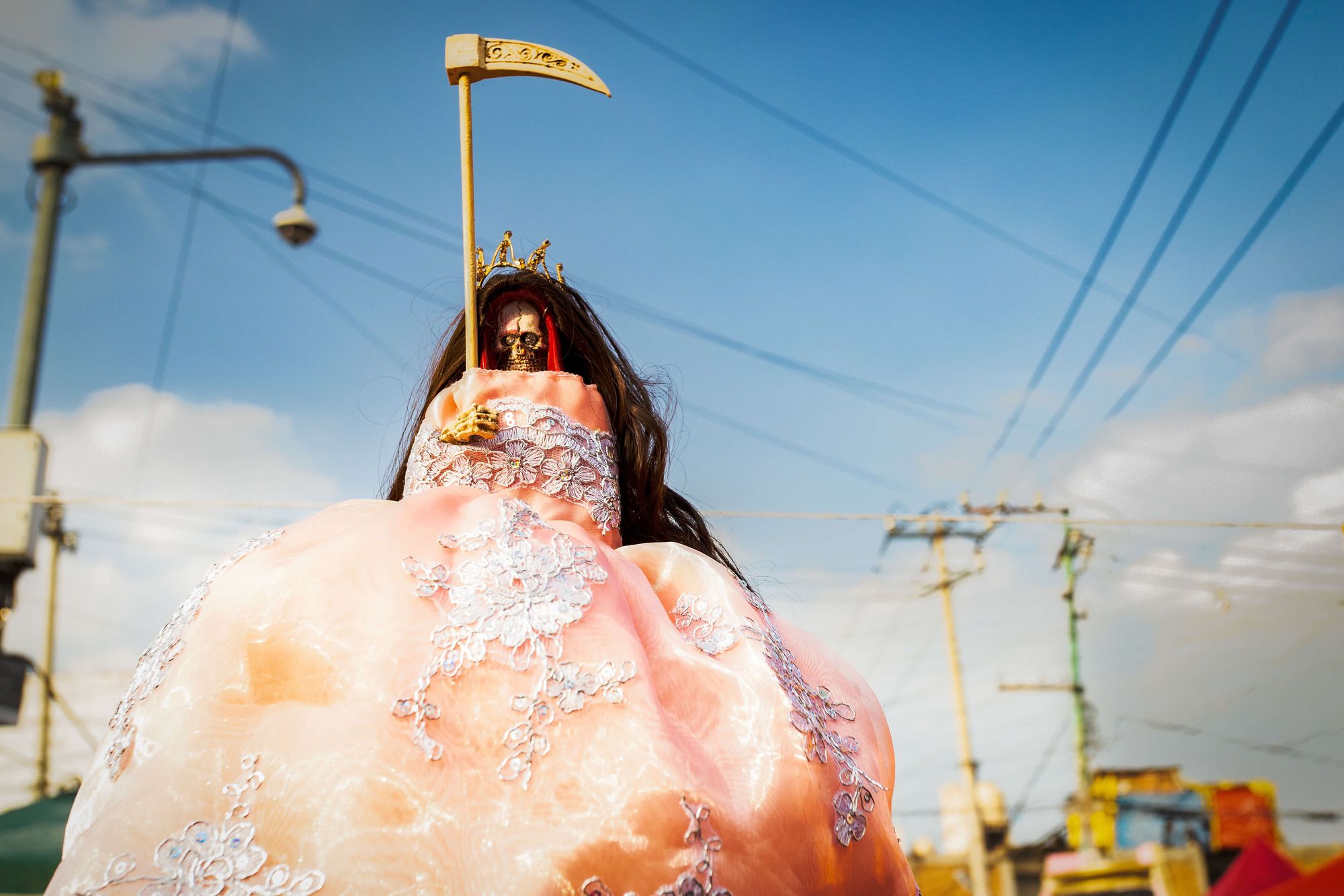
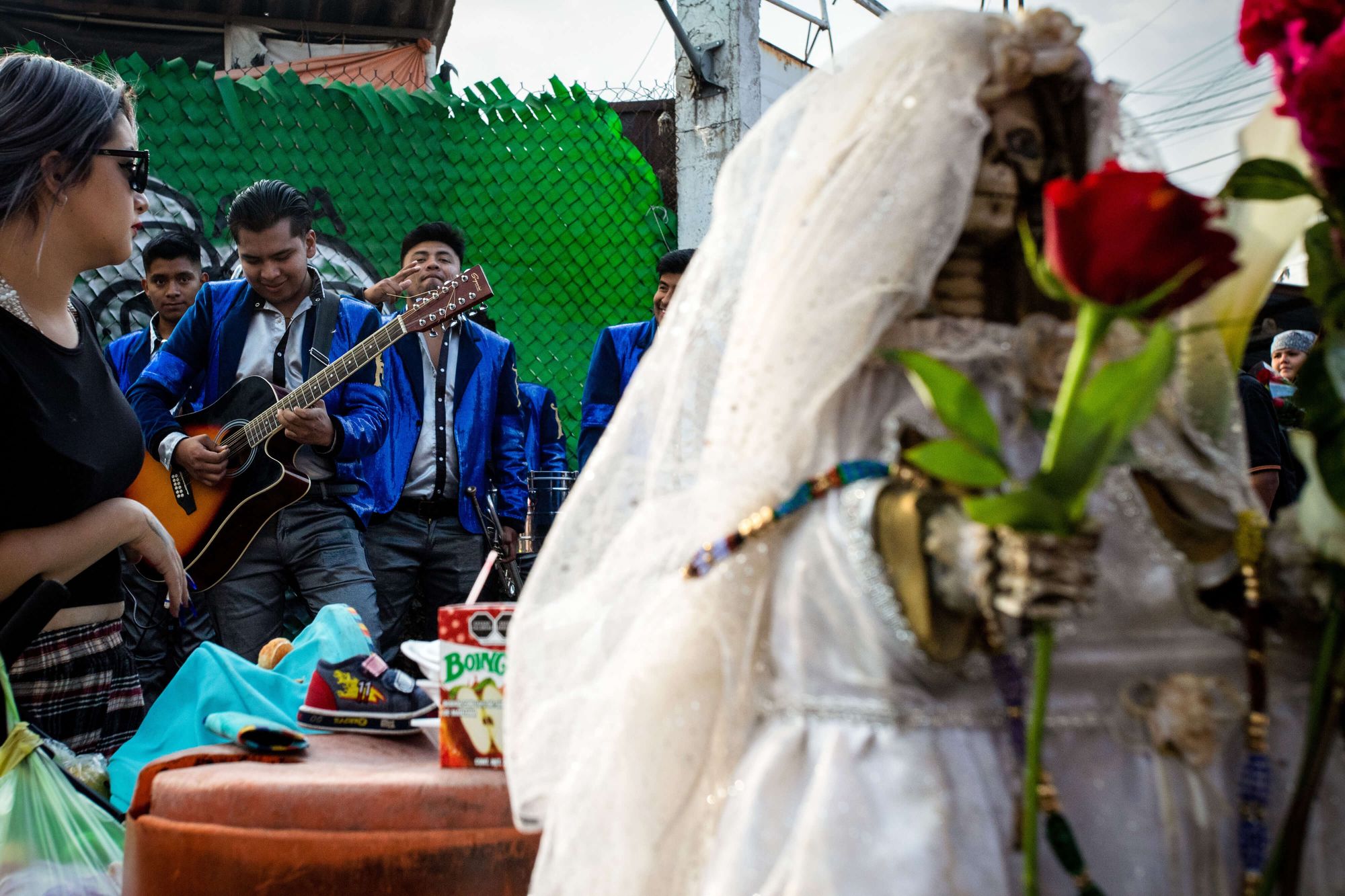

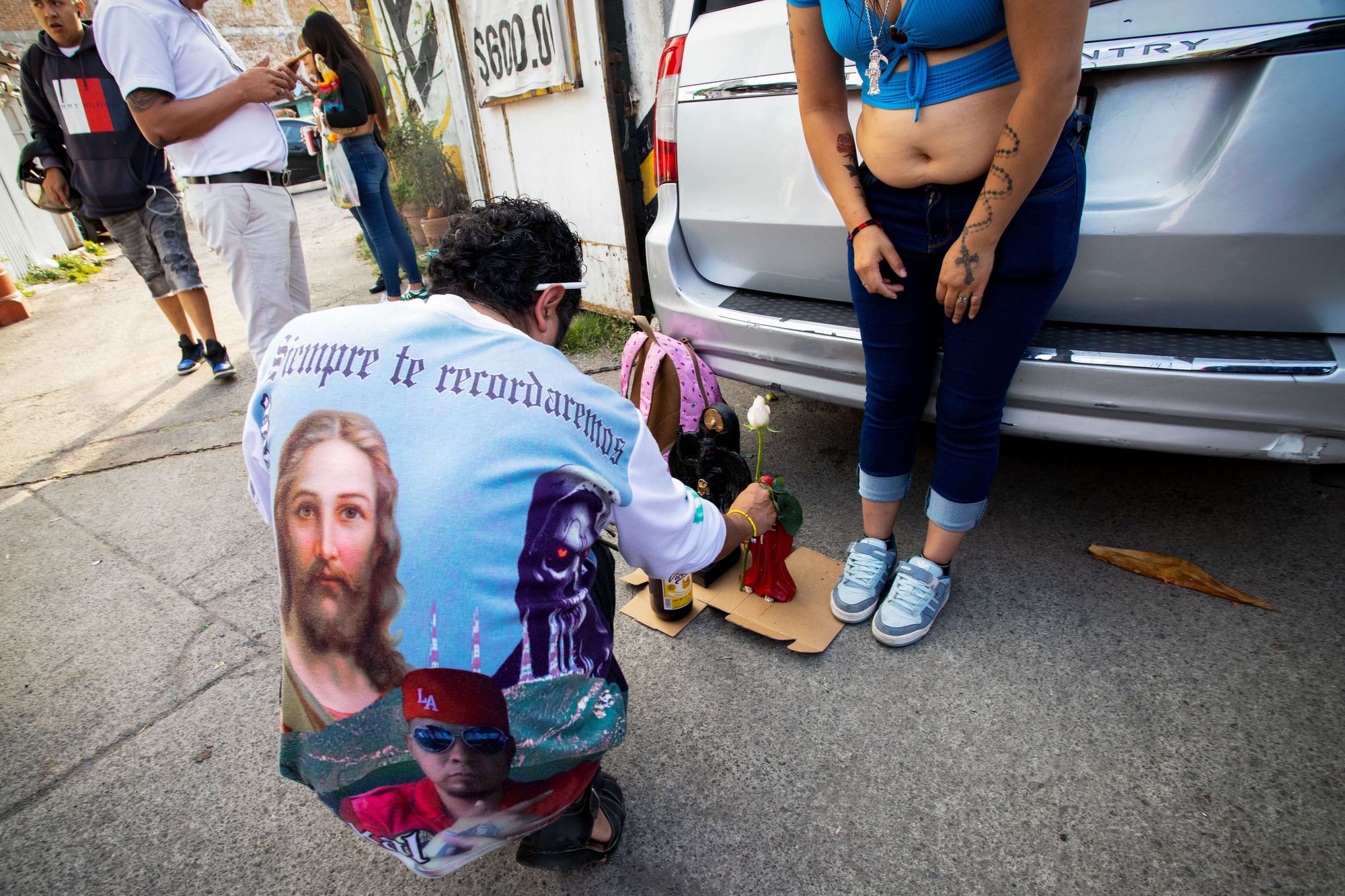
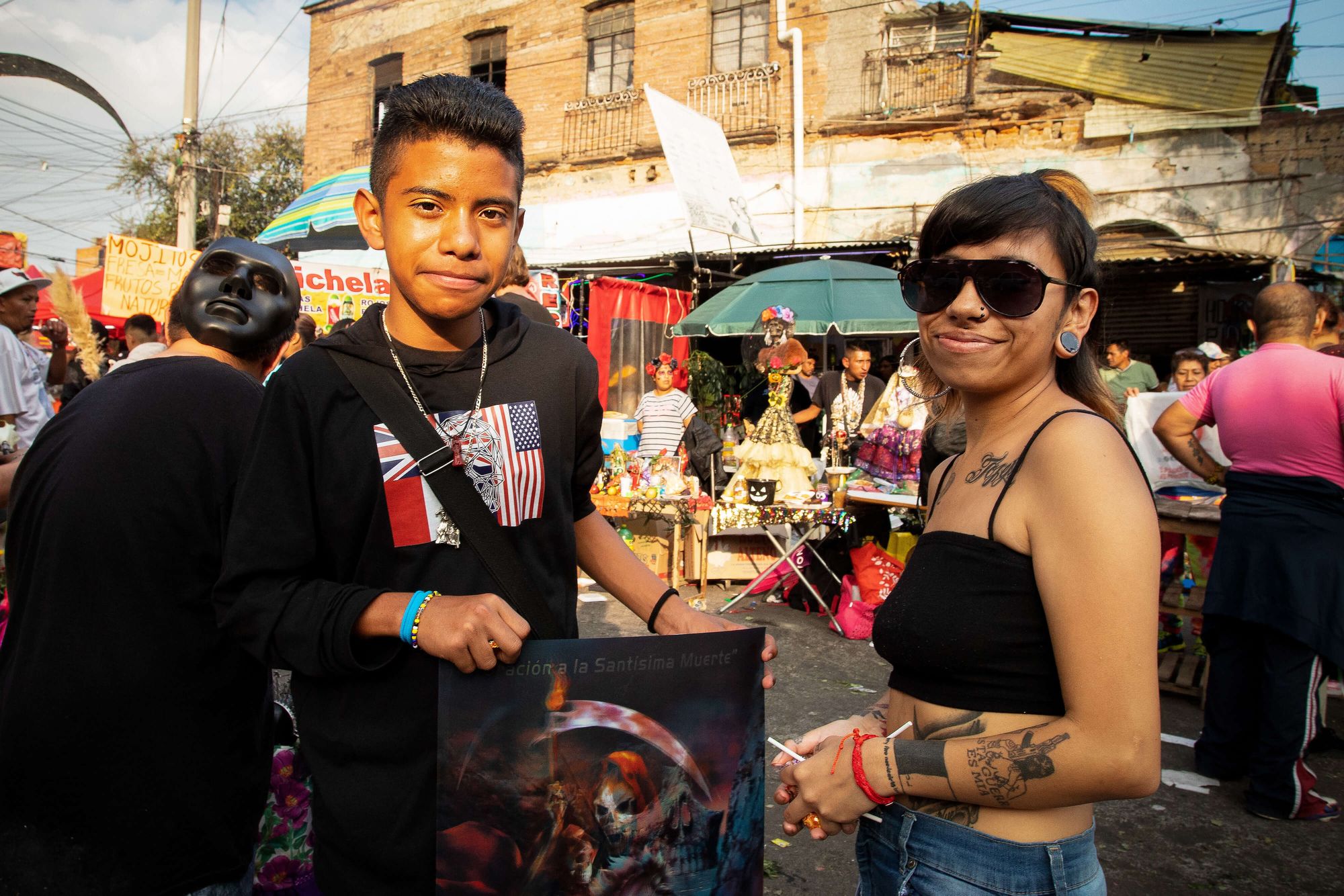
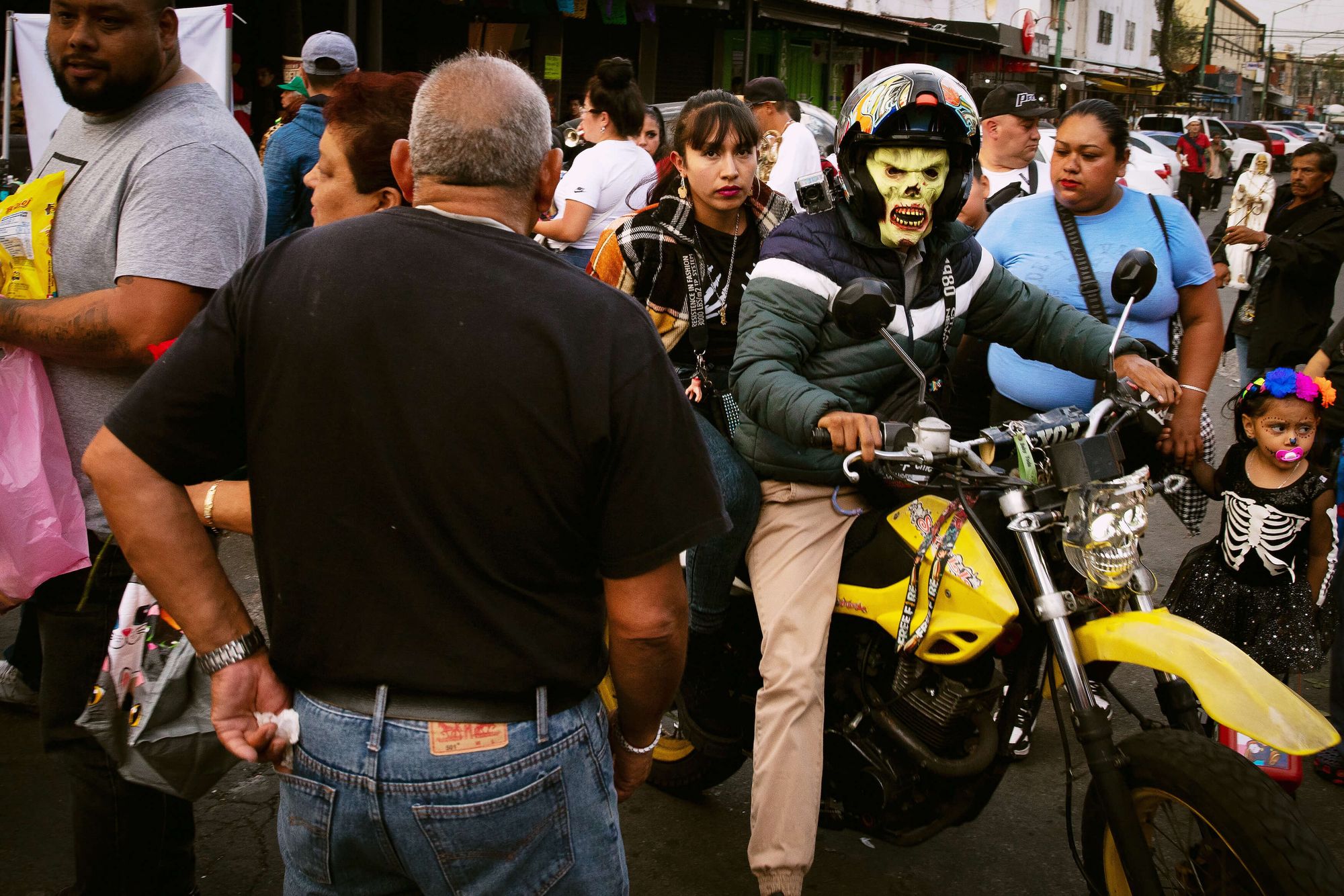

A gathering of supporters of Santa Muerte to celebrate her day at the altar in Tepito, Ciudad de México. (Photo: Václav Lang)


